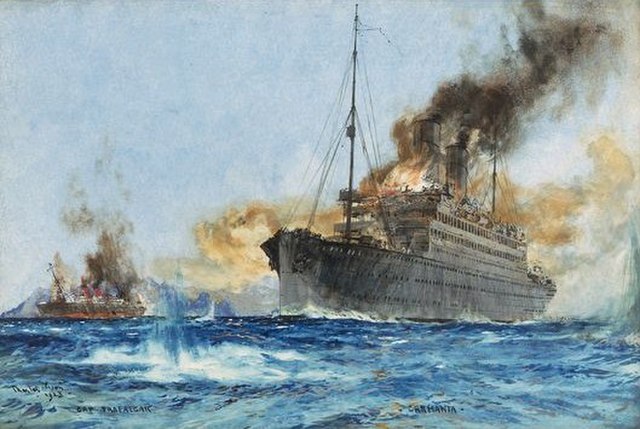Defensively equipped merchant ship
Defensively equipped merchant ship (DEMS) was an Admiralty Trade Division programme established in June 1939, to arm 5,500 British merchant ships with an adequate defence against enemy submarines and aircraft. The acronym DEMS was used to describe the ships carrying the guns, the guns aboard the ships, the military personnel manning the guns, and the shore establishment supporting the system.
The gun crew of a defensively equipped merchant ship during a drill at Halifax, Nova Scotia in 1942. A merchant seaman (in knit cap) is ready to pass a shell to the Royal Navy gunners.
The Otaki in combat with the German raider SMS Möwe, using her 4.7 inch gun. Defensive armaments also offered protection against merchant raiders.
BL 4 inch Mk VII low-angle gun on a DEMS in 1943, an obsolete WWI gun typical of WWII DEMS armament
5"/38 calibre dual-purpose Mark 37 gun mount used on American merchant ships. This example is preserved at the National Museum of the Pacific War.
An armed merchantman is a merchant ship equipped with guns, usually for defensive purposes, either by design or after the fact. In the days of sail, piracy and privateers, many merchantmen would be routinely armed, especially those engaging in long distance and high value trade.
HMS Alcantara and SMS Greif dueling at close range during the action of 29 February 1916
RMS Carmania sinking SMS Cap Trafalgar near the Brazilian islands of Trindade, 14 September 1914
Kormoran in 1940. During a single ship action on 19 November 1941, off the coast of Western Australia the German auxiliary cruiser Kormoran sank HMAS Sydney before being scuttled.







